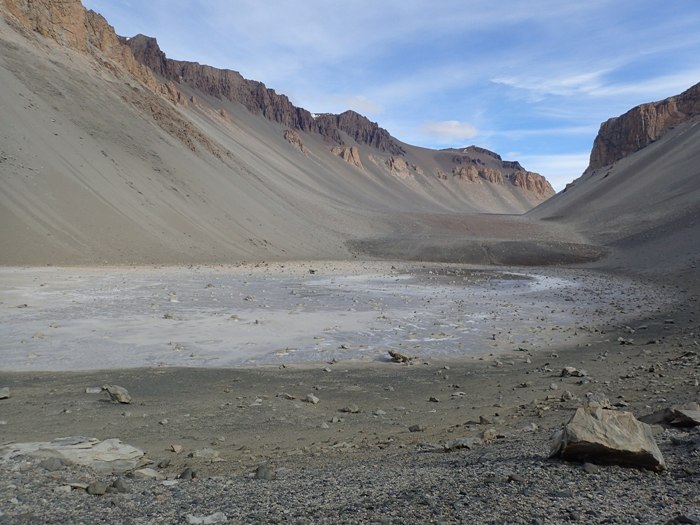
Tucked away into the western end of Wright Valley, Victoria Land, lake Duan Juan Pond is one of Antarctica’s most fascinating natural anomolies. The small lake is 300m in length with an average depth of just 16 inches, but the size isn’t what makes this body of water so interesting.
Don Juan Pond is one of the world’s saltiest water bodies, with a salinity level of more than 33%. The lake’s salinity level is several times greater than ocean water’s. Due to its high salinity, Don Juan Pond exhibits some interesting properties. Most of the lake’s salt is calcium chloride, a substance that considerably lower’s the water body’s freezing point. Thanks to this effect, Don Juan Pond doesn’t freeze up even from Antarctica’s exceptionally low temperatures. The lake can maintain its liquid form at temperatures as low as -58 degrees.
Given the dry conditions of Wright Valley, scientists are stumped as to how a lake like the Don Juan exists, to begin with. Wright Valley falls under Antarctica’s “Dry Valleys,” which are some of the coldest, most dry regions in the world. Some studies indicate the lake gets its water supply from a source deep underground, but researchers have yet to find conclusive evidence.

Another interesting feature of the lake is how its size has decreased noticeably over time. The lake was first discovered in 1961 by accident, and it was named after two scientists from the first group that studied Don Juan Pond. In 1977, the lake spanned an area of approximately 0.25 km2, according to a USGS topographical map. However, the lake’s current surface area is reportedly around 0.03 km2 – Dua Juan Pond has clearly shrunk considerably. Today, the lake is considered more of a large puddle.
Given Don Juan Pond’s considerable salinity, you might be wondering if there are signs of life in the pond. A group of scientists had the same question, and so they launched an expedition to the lake. The results were quite surprising – researchers actually found life in the lake. They discovered algae of blue-green color that cultivated the growth of yeast, bacteria, and types of fungus.
After the first expedition, scientists could no longer find any signs of life, including the initial algae that they discovered. However, they still found large traces of nitrous oxide (also known as laughing gas) in the water body, which is indicative of organic life. This is because the oxide is emitted by organic life, including humans and vegetation. So, if the algae were no longer around, what caused the emissions?
Scientists have different theories about it – many believe the traces of nitrous oxide mean that organic life must have survived in the lake, while others attribute the oxide to abiotic processes. Some researchers believe that Don Juan Pond might contain microscopic life. If this theory is proven, the lake will be even more interesting than it is now.
The Don Juan Pond is a fascinating lake with mysteries that scientists have yet to fully unveil. While we may never know the truth of how the lake exists in the Dry Valleys, and whether organic life exists in it, the water body is certainly a natural anomaly worthy of appreciation.
advertisement
